Pendant lights over a kitchen island should have a diameter between one-third and one-half of the island’s width. This ensures visual balance while enhancing the overall aesthetic. A minimum diameter of 12 inches is recommended for harmony. Additionally, pendants should be spaced 24-30 inches apart and hung 30-36 inches above the countertop. Proper sizing and placement not only enhance functionality but also create an inviting atmosphere, leading to further considerations on optimal arrangement and design choices.
Key Takeaways
- Maximum pendant diameter equals the island’s width minus 12 inches for a proportional look.
- Pendants should ideally be one-third to one-half the width of the kitchen island.
- A minimum diameter of 12 inches is recommended for visual cohesion above the island.
- Ensure 6-12 inches clearance from the island edge for proper spacing and balance.
- For larger islands, consider fewer oversized pendants to maintain a balanced aesthetic.
Determining Pendant Diameter for Your Kitchen Island
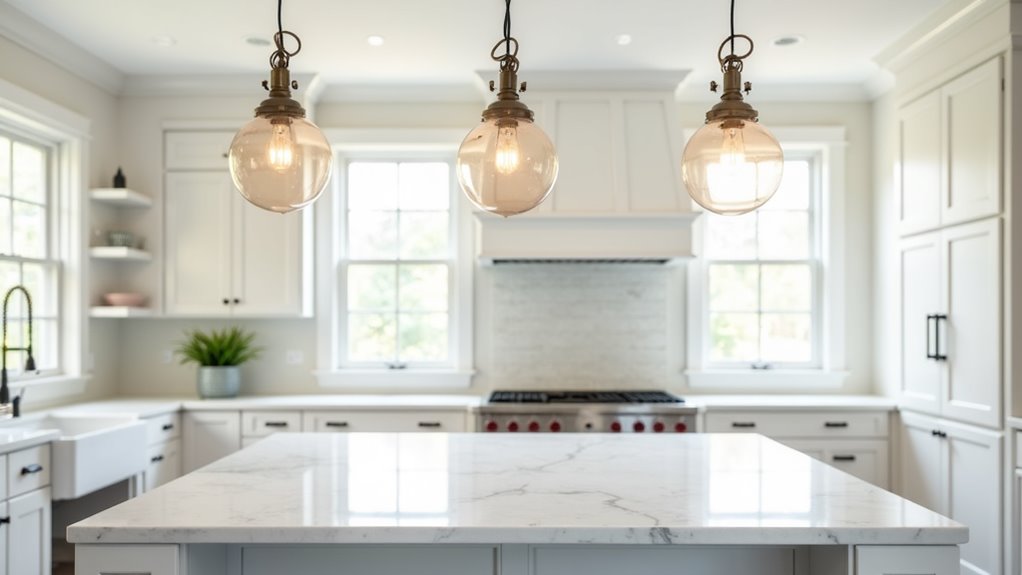
Determining the appropriate pendant diameter for a kitchen island is essential to achieving both functional and aesthetic harmony within the space. The island’s dimensions play a crucial role; by measuring its length and width, one can subtract 12 inches to ascertain the maximum allowable pendant diameter. For optimal design harmony, pendants should generally be one-third to one-half the island’s width. Making use of hand-blown glass pendants can add an element of artistry to your kitchen, providing both unique design and ambient lighting. Weight must also be considered; heavier pendants might dominate a minimalist arrangement, skewing the balance. Furthermore, clearance guidelines recommend leaving 6 to 12 inches from the island’s edge for contextual proportion. A pendant diameter of at least 12 inches is advisable, ensuring it neither overwhelms the kitchen nor fades into the background, thereby enhancing overall cohesion. Additionally, calculating the number of pendants based on the island’s size can also contribute significantly to lighting balance. The size and arrangement of pendant lights should not only serve the functional aspect but also elevate the overall design of the kitchen.
Calculating the Number of Pendants Needed
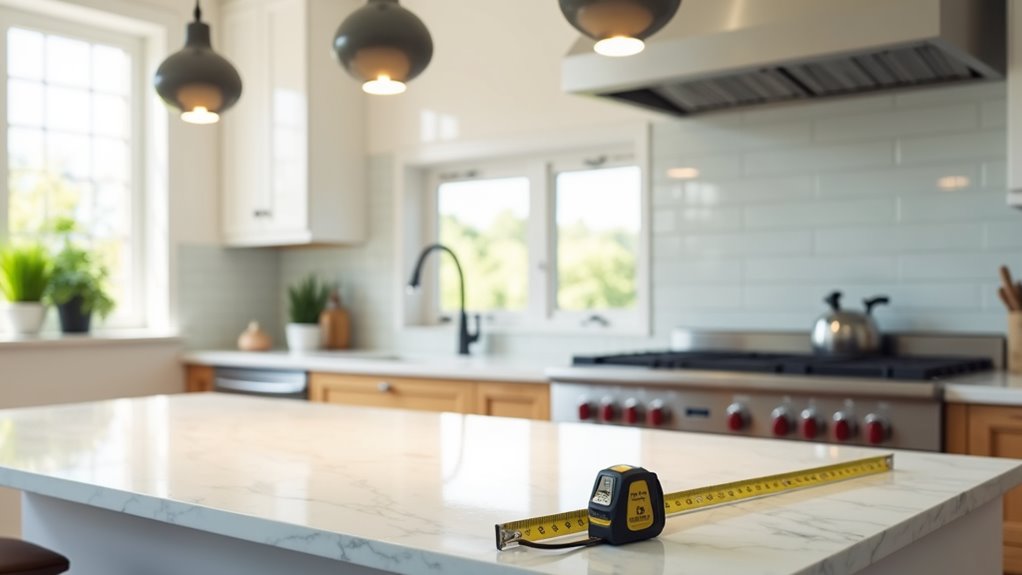
Achieving the right amount of pendant lighting is key for effectively illuminating a kitchen island while maintaining visual balance. The number of pendants required is determined by the island’s length, with a guideline suggesting one pendant for every two feet.
| Island Length | Pendant Number |
|---|---|
| 4-5 feet | 1-2 |
| 6-8 feet | 2-3 |
| 9 feet or longer | 3 or more |
For optimal light distribution, larger pendants require fewer fixtures, while smaller ones may necessitate multiple units. Visual harmony is crucial; odd-numbered arrangements are often preferred for aesthetic appeal. Ultimately, effective pendant placement complements both the kitchen’s scale and functional lighting needs. An oversized pendant with a width of 16-20 inches helps create a dramatic visual impact over a kitchen island.
Ideal Spacing Between Pendants
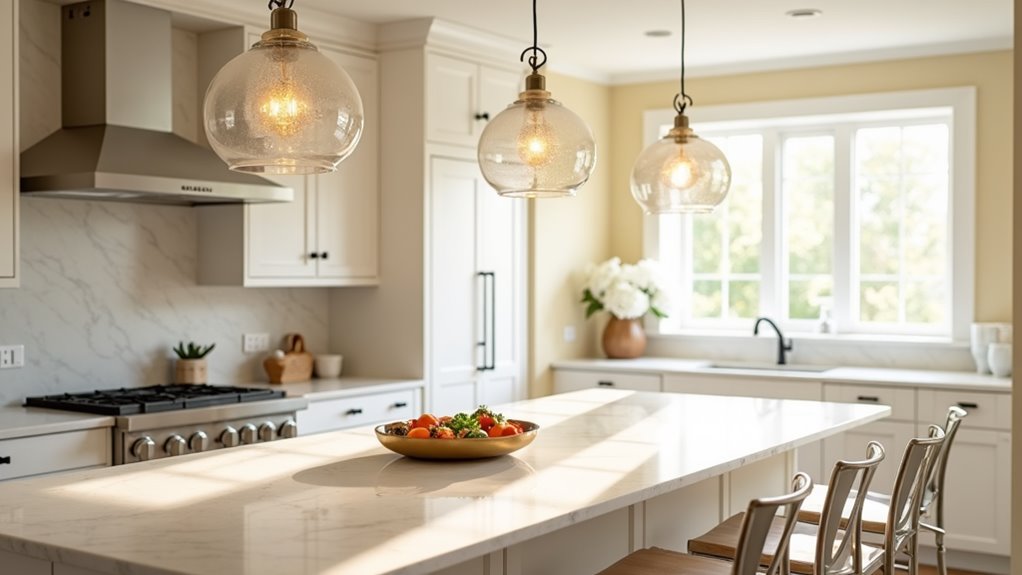
An ideal spacing between pendant lights seamlessly enhances both functionality and aesthetics in kitchen design. Employing effective spacing techniques is vital; pendants should typically be spaced 24-30 inches apart, measured from the center of one fixture to another. For larger pendants, the space can be increased to maintain visual balance, with a common guideline suggesting at least the fixture’s diameter for minimum spacing. Additionally, positioning pendants 6-12 inches from the island’s edge ensures cohesion. For two pendants, placing them over thirds of a large island promotes balanced illumination, while three should be evenly distributed, centering the middle fixture. Consistency in spacing fosters not only symmetry but also an inviting atmosphere in the kitchen. Adjustable height fixtures offer functionality and elegance in pendant placement, allowing customization to various ceiling heights.
Optimal Hanging Height for Pendant Lights
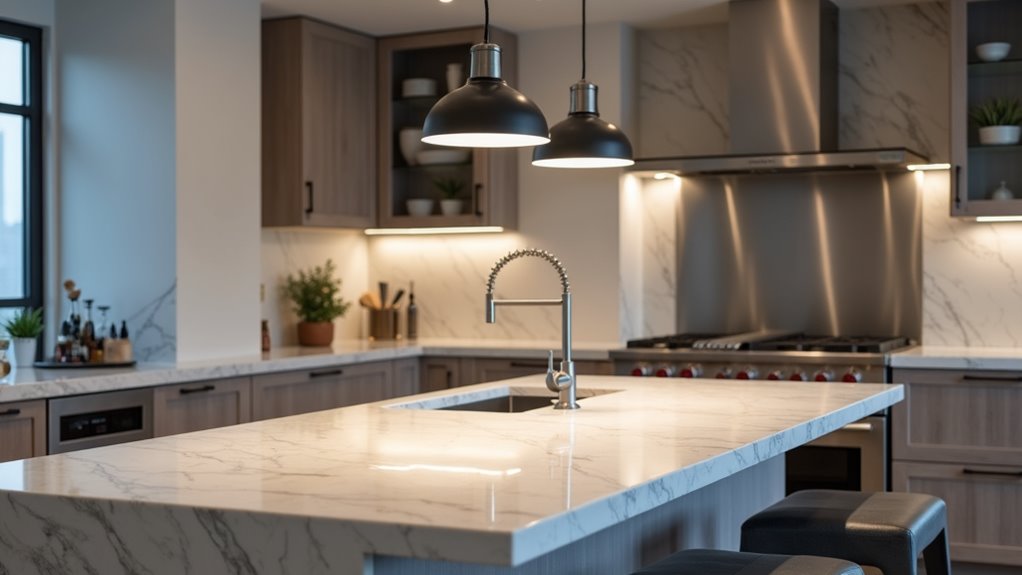
How can the optimal hanging height of pendant lights enhance both functionality and design?
The recommended hanging height for pendant lights over a kitchen island is typically 30-36 inches above the countertop. This range provides effective illumination while maintaining clear sightlines, essential for conversation and visibility.
Adjustments based on ceiling height are necessary; for every foot over 8 feet, an additional 3 inches should be added to the hanging height. This balance reduces light glare, ensuring a comfortable environment, particularly during culinary tasks where focused light is critical.
Achieving a minimum clearance of 7 feet from the floor ensures safety and headspace. Ultimately, the right hanging height creates a harmonious blend of form and function within the kitchen space.
Considerations for Island Size and Shape

The optimal hanging height of pendant lights is only one aspect of creating a harmonious lighting scheme over a kitchen island; considerations for the island’s size and shape play a significant role in enhancing both functionality and aesthetics. Height factors dictate pendant arrangements, with 4-5 ft islands typically requiring two fixtures, while longer islands (9-12 ft) can utilize multiple pendants or linear options to avoid overwhelming the space. Shape impact is equally important; rectangular islands benefit from linear arrangements, while square islands may feature a central statement pendant. For curved or L-shaped islands, clusters or placement over multiple areas ensure even illumination, maintaining proportionality with pendants sized appropriately to the island’s width for visual balance. The oil rubbed bronze finish not only enhances aesthetics with its aged patina but also adds durability, making it a suitable choice for high-traffic kitchen areas.


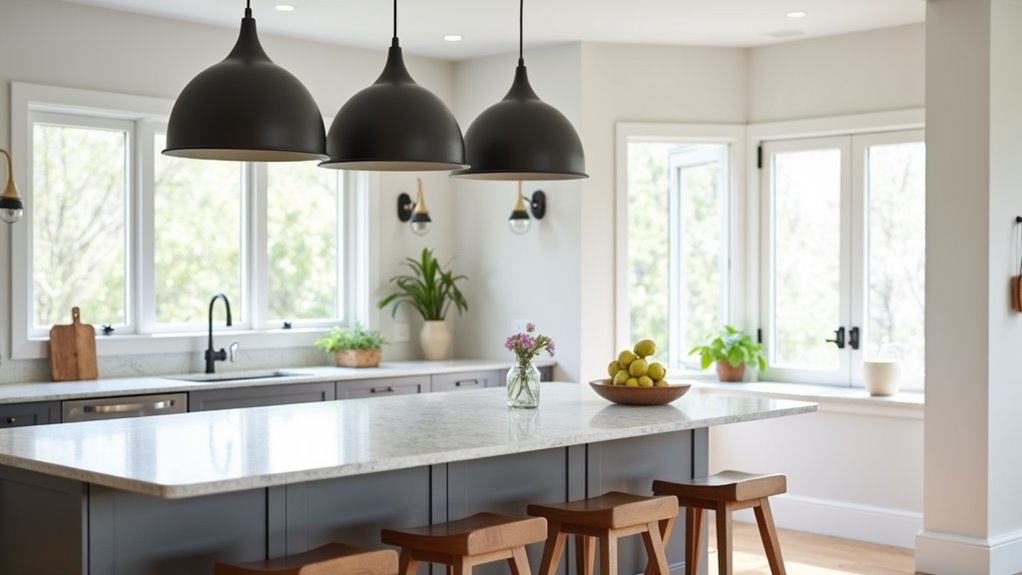
Bài viết cùng chủ đề:
7 Stunning Nordic Style Pendant Lights for Your Home
Top 3 Blown Glass Globe Pendant Lights for Your Home
Top 10 Down Rods for Pendant Lights in 2025
Top 3 Island Bench Pendant Lights for Your Kitchen
Top 10 Waterproof Pendant Lights for Outdoor Spaces
7 Stunning Dome Kitchen Pendant Lights for Your Home